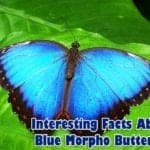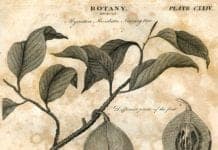april - search results
If you're not happy with the results, please do another search
April Birth Flowers
Discover the hidden symbolism behind April's birth flowers - daisies and sweet peas. Explore their significance (symbolism & meaning) in this captivating read.
Lady’s Slipper
The Lady's Slipper (Cypripedium species) is a perennial wildflower of the Orchidaceae (orchid) family indigenous to North America. Presently 52 species are recognized in the Cypripedium genus. Lady's Slippers are available in three different color arrangements: yellow, pink and white, and the rare plain white.
25 Must-See Colorful Orchids
Discover 25 stunning colorful orchids, from vibrant blues to fiery reds. Explore their unique features, habitats, and the vital role of color in orchid ecology.
World’s Top 15 Poisonous Caterpillars
There are many kinds of poisonous caterpillars; several caterpillars develop chemical warfare - they become poisonous. Here are 15 species of poisonous caterpillars from around the world.
Top 21 Facts About Blue Morpho Butterfly
The Blue Morpho butterfly is the most well-known species in the butterfly genus Morpho. Learn the top 21 facts about the Blue Morpho butterfly here.
America’s 15 Must-Visit Botanical Gardens: Discover Them Today!
From exquisite blooms to exotic plants, our guide to America's top 15 botanical gardens promises enchanting adventures. Don't miss out on these beautiful, botanical must-sees!
43 Blue Flowers Unveiled: Why These Beauties Have Captured Everyone’s Attention?
Discover the hidden secrets of 43 types of blue flowers in our captivating blog post. Explore the rarity of natural blue pigments in flowers and symbolism and meanings of blue flowers.
Scabiosis
Native to Africa, Asia, Europe, and the Caucasus, Scabiosa includes around 70 species of small annual and perennial herbaceous plants that belong to the Caprifoliaceae (honeysuckle) family. These plants are mainly recognized by their unique appearance and genus name.
Monte Cassino
Loved by butterflies, gardening enthusiasts, and florists, this remarkable flower Monte Cassino spotlights delicate clear white clouds of dainty daisies with a yellow center that hovers over neatly trimmed small green leaves that form a sturdy, bushy clump. The florets on the central disc are generally yellow, surrounded by thong-shaped ligulate florets in white, purple, blue, or pink shades.
Exploring the Top 50+ Most Exquisite Purple Flowers in the World
Are you looking for cute purple flowers to plant in your garden, or want to learn about them from a botany perspective? Here are the 50+ top pretty purple flowers and their names.
Blooming Texas: 25 Gorgeous Native Flowers Revealed!
Texas is a large state with its own floristic region, having more than 5,000 species of native flowering plants. Because of its diverse landforms, Texas offers many famous blooms for visitors and residents. Explore the top 25 Texas flowers and their characteristics.
The Allure of Black Flowers: Unveiling the Top 21 Darkest Blooms
This article explores the top 21 black flowers, delving into their unique characteristics, growing requirements, and fascinating facts. Each of these varieties, from the classic Black Dahlia to the exotic Black Bat Flower, has a story to tell.
Order Asterales / Daisy and Sunflower
Asterales is a dicotyledonous order of flowering plants that holds ten percent of the angiosperm species diversity. Common sunflower, common daisy, Toropapa, Hydrangea, Bogbean, Water snowflake, and Cobalt mound are some of the beautiful flowers in Asterales.
Tansy
The tansy (Tanacetum vulgare) is a perennial herbaceous plant of the Tanacetum genus in the Asteraceae family, native to temperate areas of Asia and Europe. Tansy is a flowering plant with finely serrated compound leaves and yellow button-shaped flowers.
Sanvitalia
Sanvitalia procumbens is a cheery Mexican annual with blossoms like miniature zinnias. It is an ideal choice for containers and hanging baskets. Sanvitalia procumbens is a carpet-forming annual that usually grows up to 6-inches tall. It has a frosty summer bloom of a miniature sunflower in ¾ inches diameter with yellow to orange-yellow stripes and dark purple-brown central discs
Salix
The Salix genus's trees, shrubs, and willows in the Salicaceae family are mainly native to northern temperate zones. The Salix genus includes about 400 species of deciduous shrubs and trees.
Rue
Rue (Ruta graveolens), also known as herb-of-grace, is a type of Ruta cultivated as an herbaceous and ornamental plant. It is endemic to the Balkan Peninsula. In general, the rue is expected to bloom between June and October. The small, hermaphroditic, yellow flowers create a loose veil of golden corymbs.
Ranunculus
Ranunculus japonicas is a perennial herb of the family Ranunculaceae. It is a wild grass native to Japan. Ranunculus flowers add beauty and vibrancy to any garden. These perennial herbaceous plants, best known for their fragile rose-shaped petals, produce long-lasting cut flowers.
Pansy
Pansy is one of the first heralds of spring in gardens, but its ability to thrive in cold climates makes it a staple for fall planting and garden beds. Garden pansy (Viola × wittrockiana) is a large-flowered hybrid plant grown as a garden flower.
Japan Rose
Kerria japonica, also known as Japan rose or Japanese kerria, is a small ornamental shrub in the Rosaceae family native to Korea, Japan, and China. The flowers are a brilliant golden yellow with 5 petals, similar to the old-fashioned rose.
Helianthus annuus
Sunflower is the common name of one of the plants in the Helianthus genus in the flowering Asteraceae family (known as the asters, daisies, or sunflower family). The inflorescence is a large disc with a 10 to 30 cm diameter and consists of 16 to 30 golden yellow florets.
Hazelnut
Hazelnut (Corylus avellana), commonly referred to as cobnut or European filbert, is a deciduous, multi-stem, brush-like sucker shrub that usually reaches a height of 12 to 20 feet. The pale gray-yellow, somewhat conspicuous male flowers appear on hanging, stalk-less catkins (2 to 3 cm long). The inconspicuous female blooms with red stigmas flower above the male catkins.
Dead Nettle
Dead Nettle is among the most famous wild herbaceous plants and is known for its sweet flowers. Originally, The Dead nettle is a perennial grass of 30-50 cm in height. It is native to Europe, China, Korea, and Japan. The most popular variety of dead Nettle has white flowers, but those with reddish and yellowish flowers.
Creeping Lettuce
The creeping lettuce is a flowering plant of the Asteraceae family. It is a widespread species in Japan. Being perennial, this plant grows to 0.2 meters by 0.5 meters. Ixeris stolonifera prefers moist soil and grows well in semi-shade or no shade.
Chinese Peony
Paeonia lactiflora is a flowering plant that can grow 20-28 inches tall. The Chinese Peony is a perennial herb of the family Paeoniaceae. Peony is named after Paeon, the Greek god of medicine and healing.
Amur Adonis
Adonis ramose is an herbaceous Japanese plant with a height of 15-40 cm. It is a native flower in Japan. They are commonly used for groundcover, understory, or border. Amur Adonis is planted for good luck.
Adder’s Tongue
Erythronium americanum is a perennial herb that belongs to the family Liliaceae. This species is a native range of Eastern North America. The common name of Adder's Tongue is given because of the shape of the flowering shoot.
Trientalis
Trientalis borealis is a star-shaped perennial wild-flowering plant native to the North American forests that bloom from May to June. Each stem has a whorl of 5 to 9 lance-shaped leaves at its end, with 1 or 2 white, green, or brown flowers on smaller stems extending from the center of the whorl.
Sage
From culinary to medicinal uses, sage has long been an herb garden staple. Sage is most commonly cultivated for its flavor, but it's also a relatively perennial and hardy plant in the garden. Garden sage is a medium-sized perennial shrub typically grows to between 15 to 24 inches (40 and 60 cm) in height.
May Birth Flowers
Unveil the significance of May birth flowers! Discover the hidden meanings and symbolism behind Lily of the Valley and Hawthorn in this insightful blog post.
Top 26 Washington Birds
Explore the overview of 26 must-see top Washington Birds species including facts on goldfinches, owls, hawks, finches and more. This comprehensive guide will help with identification of birds of Washington.
Greater Antillean Grackle
The Quiscalus niger, or Greater Antillean grackle, is a unique Caribbean songbird thriving in human habitats across Cuba, Jamaica, Hispaniola and Puerto Rico. Learn about this gregarious bird's classification, physical appearance, vocalizations, range, nesting habits, behavior, and relationship to humans.
Adelaide’s Warbler
Preview a dry forest specialist, Adelaide's Warbler (Setophaga Adelaide), whose preference for subtropical habitats, unlike mainland wood-warbler relatives, heightens both its inherent vulnerability and importance as a Puerto Rican endemic. Explore integrated conservation solutions that sustain warbler populations while supporting continued agricultural heritage across this region.
Yellow-shouldered Blackbird
Trace an endemic icterid, the radiant Yellow-shouldered Blackbird (Agelaius xanthomus), through extreme population plunges from habitat destruction to intensive recovery efforts centered on dry forests and mangroves. Learn how strategic protections aid this species' gradual rebound despite ongoing threats from cowbirds, rats, mongooses, and disease.
Puerto Rican Owl
Discover a versatile nocturnal raptor, the Puerto Rican Owl (Gymnasio nudipes), stealthily ruling the island's forests and urban areas under cover of night. Follow its prowess capturing large insects and small vertebrates to sustain viable populations. Understand how this savvy Screech owl's adaptability across wooded to developed areas enables its continued success.
Puerto Rican Nightjar
Rediscover a ghostly lost species - the Puerto Rican Nightjar - emerging phantom-like from rapidly vanishing subtropical dry forests still echoed by its mysterious calls. Learn about the nocturnal insectivore's distinctions, specialized habitat needs, threats from encroaching human activity, and why protecting this specialized niche remains essential to ensure the shy bird's continued existence.
Mongoose Lemur
Learn about the endangered mongoose lemur (Eulemur mongoz), a small Madagascar primate with red beards and bushy tails. Get fascinating facts on their rainforest habits, unique behaviors, seed dispersal ecology, and major threats driving their worrying decline.
15 Outstanding Birds of Ohio
At present, Ohio has 5 distinct geographical regions from Lake & Till Plains to Appalachian Plateau and Bluegrass Region. Find 15 Best Birds of Ohio here.
Top 15 Genetics News of 2021
This Genetics news highlights the discoveries and innovations in Genetics in 2021. It emphasizes the genetic basis of various diseases and illnesses, including schizophrenia, aortic aneurysms, liver cancer, and other lifestyle diseases, the genetic basis of embryonic stem cell development and more. Explore top 15 Genetics news of 2021.
Red Ribbons
Red Ribbons (Clarkia concinna) are a species of flowering plants in the Onagraceae (evening primrose) family. It is native to California, where it is found in the northern coastal ranges from Humboldt County to Santa Clara County and in the foothills of Sierra.
Shooting Star
Dodecatheon media, a shooting star, is a very popular native North American wildflower, commonly found in open woods, prairies, meadows, rocky wooded slopes, and bluff ledges. The shooting star is a plant species in the Primulaceae (primrose) family. There are more than 17 species in the Dodecatheon genus.
Primrose
With over 400 species to select from, these cheerful spring plants are available in a rainbow of colors. As you can imagine, the flowers' shapes, sizes, and colors vary. The common primrose (Primula vulgaris) is a species in the Primulaceae family native to northwestern Africa, southern and western Europe, and parts of southwestern Asia.
Wild Narcissus
Narcissus poeticus is a flowering plant of the order Asparagales. This species is native to Central and Southern Europe. The Wild Narcissus plant is toxic. The most poisonous parts are the bulbs.
Lathyrus odoratus
Also known as the sweet pea flower, Lathyrus odoratus is an annual flowering plant cultivated for its attractive and fragrant flowers. You can sometimes see them nicely arranged in bouquets or adding a nice splash of color to home gardens. Plant species have purple flowers, but many varieties now offer a variety of additional flower colors, including white, lavender, blue, red, pink, and bicolor.
Shasta Daisy
The cheery Shasta daisy (Leucanthemum x superbum) is a perennial classic. It resembles the well-known roadside daisies but has larger, sturdier flowers. These daisies return like clockwork every spring or early summer and bloom until early fall.
Everlasting Daisy
Rhodanthe chlorocephala is a species of daisy native to Australia and belongs to the Asteraceae family. The Everlasting Daisies can be dried and will last for a long time. This is done by hanging the flowers upside down after the cutting. This is best done when the flowers first open.
Marguerite Daisy
For an eye-catching show in cooler weather, plant the Marguerite daisy (Argyranthemum frutescens). Sometimes confused with Shasta daisies, the daisy is quite shrubby and mounded. The deeply incised dark green foliage is aromatic when pressed. White, yellow, and pink varieties are available, some with blue-green foliage and/or double flowers.
Daisy
Daisies exude innocence, joy, and freshness. They are among the most famous flowers in the world, where they embellish cultivated landscapes and wild fields. They are available in many colors, including blue, red, pink, and white. Daisies are perennials that grow to a height of about 6 inches.
Teasel
Teasel (Dipsacus spp.) is a genus of plants from the Caprifoliaceae (honeysuckle) family. Members of this genus are typically known as teazle or teazle. The flowers are white, purple, lavender, or dark pink. Dipsacus species are endemic to North Africa, Asia, and Europe. The genus name Dipsacus is a Greek word meaning thirst.
Rose
Loved by many, the rose (Rosa spp.) is a popular garden flower. Its features, including its precious fragrance and shape, make it easy to recognize. Roses have been grown for millennia and have a long history that goes back thousands of years.
Prickly Water Lily
Euryale ferox is a species of water lily found in Asia. The Prickly Water Lily is a perennial plant in the order of Nymhaeales. The seeds of the Prickly Water Lily are used in Chinese traditional medicine. A study showed that extracts from Euryale ferox manifest antioxidant activity.
Shirley Poppy
The Shirley poppy is the name of a group of annual ornamental varieties from the Papaver rhoeas (European wild poppy). There are more than 120 species of poppies in the genus Papaver of the Papaveraceae family. The Shirley Poppy was first produced in 1880 by Reverend William Wilks, pastor of the Shirley parish in England.
Marsh Gladiolus
Gladiolus palustris is a perennial herb of the Iridaceae family and is native to Central and NW Europe. This species can grow to a height of 12-24 inches. The genus Gladiolus is a Latin word that means "a sword". The specific name palustris is a Latin word that means "growing in marshes" the plant's environment.
Thunbergia
Thunbergie has been called "the most gorgeous vine in the world" by some. This blooming, twisted vine looks like morning glory from a distance, and the flowers are similar up close. Thunbergia grandiflora is a vine in the Acanthaceae family. There are 100 to 150 species of flowering plants in the Thunbergia genus.
Japanese Camellia
While many flowering shrubs (Camellia japonica) peak in Summer, the Camellia flower is endemic to Japan and it is unique because it mainly blooms in early spring and late winter. There are nearly 300 species of Camellia, the color of which includes white, pink, and red.
Common Peony
Paeonia officinalis is a perennial herb native to the mountainous regions of Southern Europe. The Common Peony plants belong to the order Saxifragales and the family Paeoniaceae. The genus Paeonia comes from the Greek name Paeon meaning a god’s physician.
February Birth Flowers
Discover the beauty and symbolism of February's birth flowers: violets and primroses. Dive into their rich history, meanings, and unique facts.
Top 15 Genetics News of 2022
Explore 2022's top genetics breakthroughs: AI in gut gene research, zebrafish atlas, NAFLD insights, longevity studies, and more in this comprehensive Genetics News of 2022 overview.
Speedwell
Veronica, also known as Speedwell, is an easy-to-grow, carefree perennial with long spikes of tiny white, pink, blue, or purple petals. With around 500 species, Veronica is the largest genus in the Plantaginaceae family of flowering plants. The precise origin of this plant cannot be exactly determined.
Queen Anne’s Lace
Queen Anne's lace flower looks like lace, and the flower often has a single purple dot in the center. Daucus carota is a biennial herb that belongs to the Apiaceae (carrot) family and is native to Southwest Asia and Europe. The genus includes about 47 species.





















































































